Hidden History Brought to Life in a Game
From burial grounds to secret societies, HiddenSG brings old records from the National Archives to life, weaving historical materials into immersive adventures across the island.
By Ruth Wee
18 August 2025
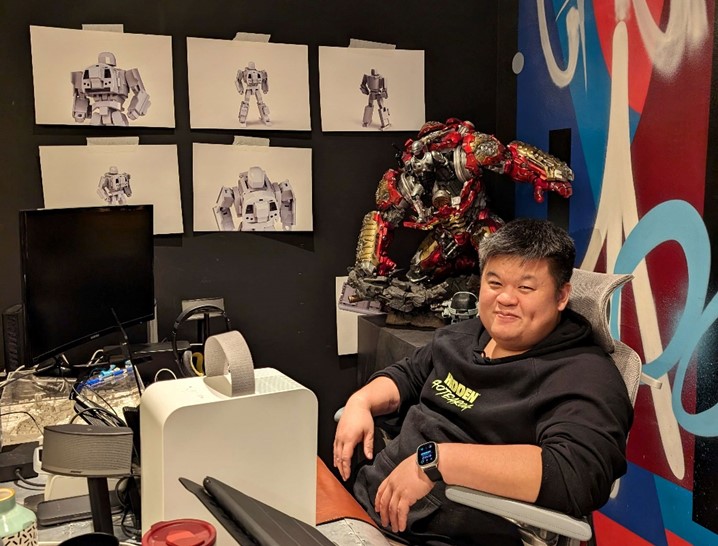 Lim Yee Hung in the HiddenSG office. Photo by Ruth Wee.
Lim Yee Hung in the HiddenSG office. Photo by Ruth Wee.What do burial grounds, secret societies and old photographs have in common? For Lim Yee Hung, co-founder of Hidden Singapore (HiddenSG), they are all fragments of Singapore’s history waiting to be pieced together.
Incorporating materials from the National Archives of Singapore, HiddenSG is an escape game based in the real world that uses WhatsApp messages and artificial intelligence (AI) to guide players to the hidden gems in Singapore’s many neighbourhoods.
Led by Void Deck Cat, the game’s in-house mascot and AI chatbot, players receive clues that bring them on quests around Singapore. As they explore different locations, players can text their answers to the cat or ask for hints if they are lost.
HiddenSG has attracted over 75,000 players since its launch in mid-2022, garnering rave reviews about its interactive and historical elements. The game has since expanded internationally, with Hidden Aotearoa launching in New Zealand in December 2024 in a partnership with one of the country’s largest Māori tribes.1 There are plans to bring similar experiences to Australia, the United Kingdom and the United States.
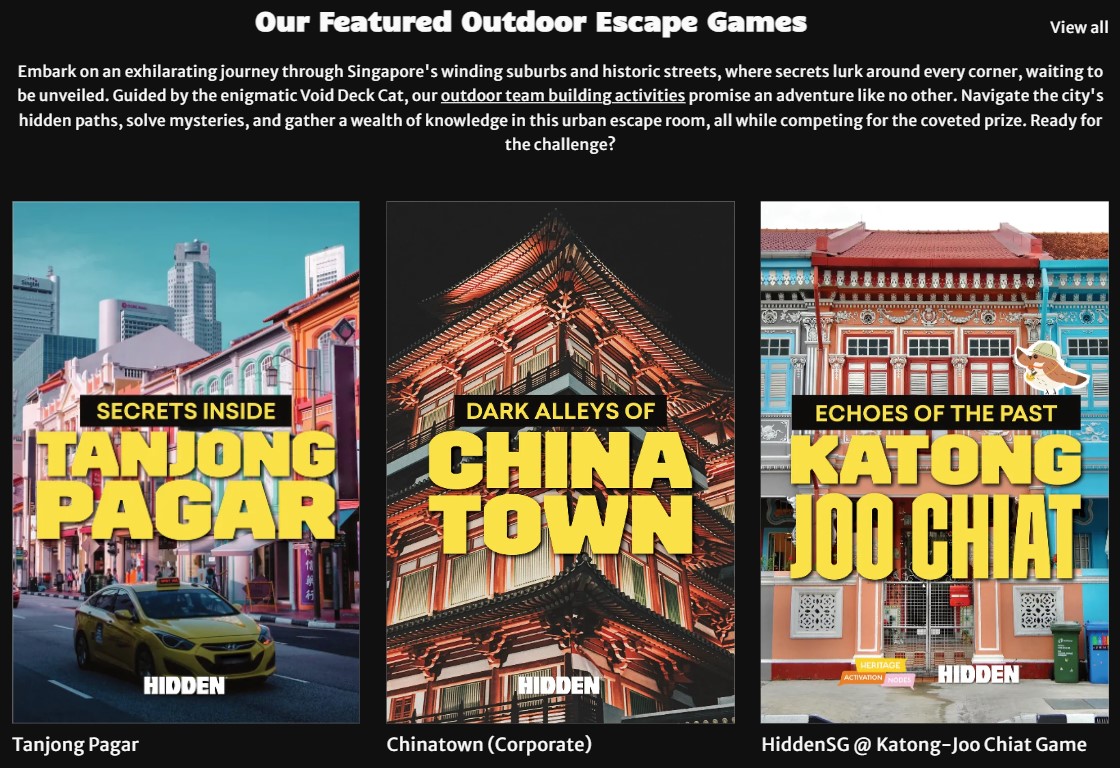 Range of outdoor escape games offered by HiddenSG. Screengrab of HiddenSG website.
Range of outdoor escape games offered by HiddenSG. Screengrab of HiddenSG website.Unearthing the Past Through the National Archives
Lim returned to Singapore in 2022 after a 14-year stay in the UK. “When I came back, I was trying to reconnect with my roots in Singapore,” Lim recalled. In a bid to get reacquainted with Singapore’s history and heritage, he stumbled upon the National Archives which proved to be a treasure trove.
Fuelled by curiosity about local lore surrounding Holland Village, Lim turned to the archives for evidence. “I knew Holland Village used to be a graveyard so I wanted to find the photos before it became the Holland V [we know] today,” he shared. From research, he uncovered historical photographs2 and oral history recordings3 verifying that the area used to be a Hakka cemetery.
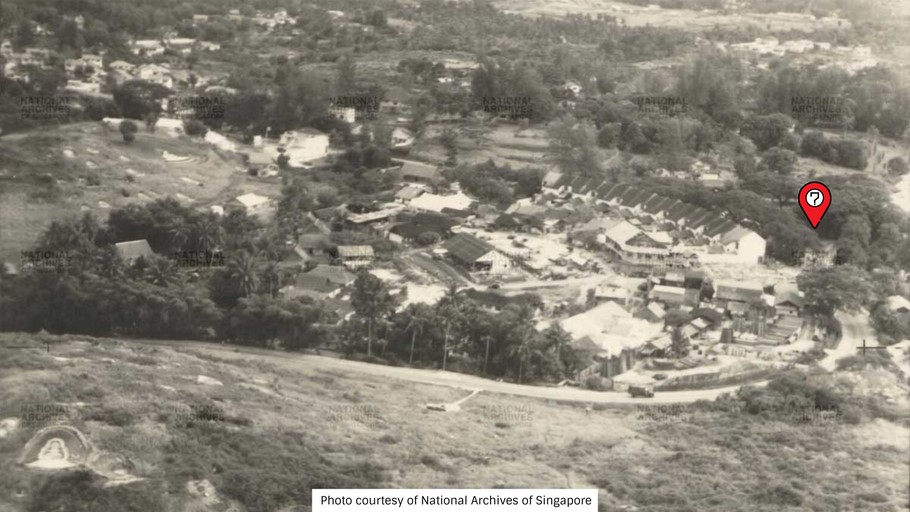 Cropped photograph of Holland Village with a Chinese cemetery in the foreground taken by the British Royal Air Force, 1958. British Royal Air Force Collection, courtesy of National Archives of Singapore.
Cropped photograph of Holland Village with a Chinese cemetery in the foreground taken by the British Royal Air Force, 1958. British Royal Air Force Collection, courtesy of National Archives of Singapore.To Lim, different archival mediums highlight different facets of history, each providing pieces of a larger puzzle. “The oral histories give you a lot more nuance”, while photographs reveal places in their former glory. Weaving together both mediums in his game provides players with a glimpse into Singapore’s past. “Because you are standing there, you’re seeing the photo and you’re listening to the [audio track], then your imagination kicks in,” he said.
Research often leads to unexpected discoveries. He did not know that Redhill Lim used to be a notorious haven for gangs and secret societies until he chanced upon an oral history interview.4 “My god… all the Sa-lak-kau5 [a secret society] and everything was there, like police don’t even go there.”
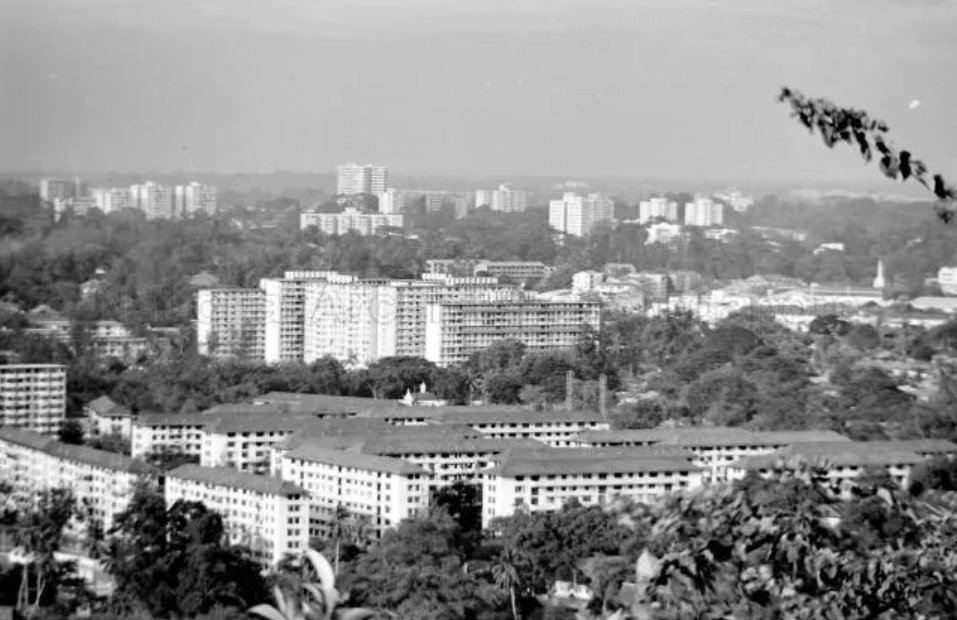 In the foreground are the Singapore Improvement Trust flats in Redhill Close, 1960s. Eelke Wolters Collection, courtesy of National Archives of Singapore.
In the foreground are the Singapore Improvement Trust flats in Redhill Close, 1960s. Eelke Wolters Collection, courtesy of National Archives of Singapore.The oral accounts helped paint a wider picture of Redhill. “You’re trying to get to the point where let’s say I’m searching for the gangs in Redhill… the person will be telling you everything about Redhill. So they’ll be like, ‘by the way there’s that thing’. And so in trying to find out more about the gang, by being forced to listen to this person talk about everything with Redhill, you will learn a lot of things that you didn’t know also existed,” Lim explained.
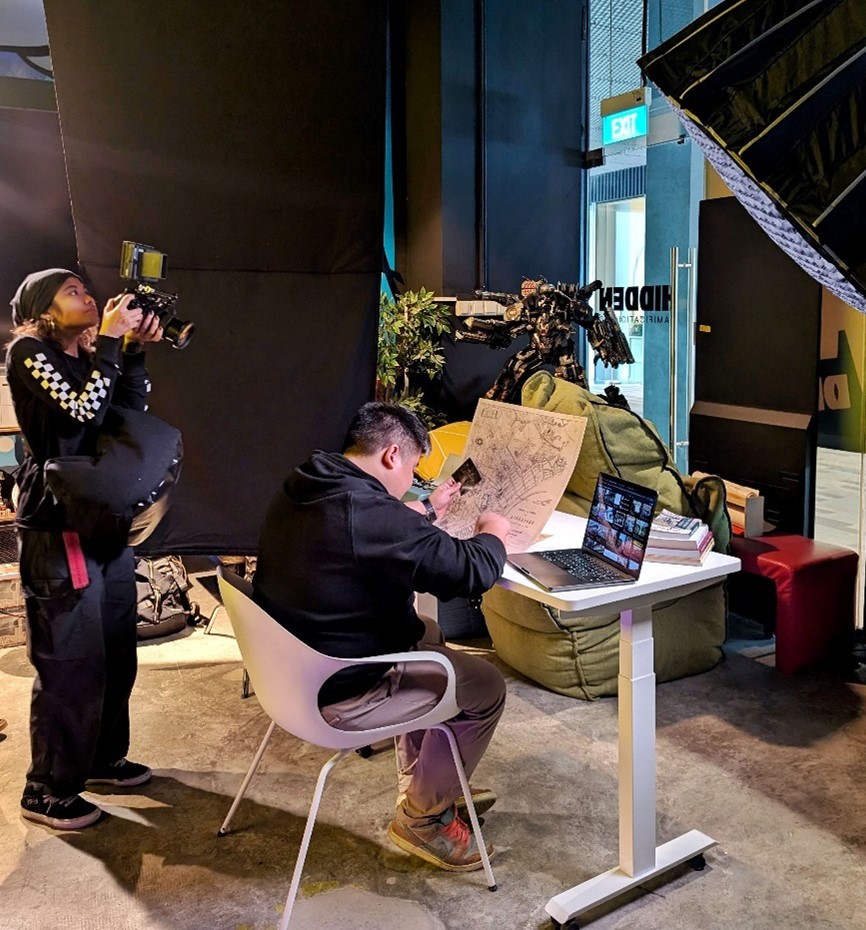 Lim Yee Hung reenacts his use of archival materials during a video shoot for “Be Inspired By History”, a campaign by the National Library Board inviting Singaporeans to use historical records from the National Library and National Archives to create new and original works. Photo by Ruth Wee.
Lim Yee Hung reenacts his use of archival materials during a video shoot for “Be Inspired By History”, a campaign by the National Library Board inviting Singaporeans to use historical records from the National Library and National Archives to create new and original works. Photo by Ruth Wee.Challenges and Strengths of Working with Historical Materials
While the National Archives holds valuable information about the past, working with archival materials presents unique challenges. Lim describes how finding specific locations in historical photographs can be difficult, as the descriptions or captions tend to indicate the general location and are not detailed enough. For instance, when trawling through aerial photographs by the British Royal Air Force, Lim had to meticulously examine many images before he could identify the exact location he was looking for.
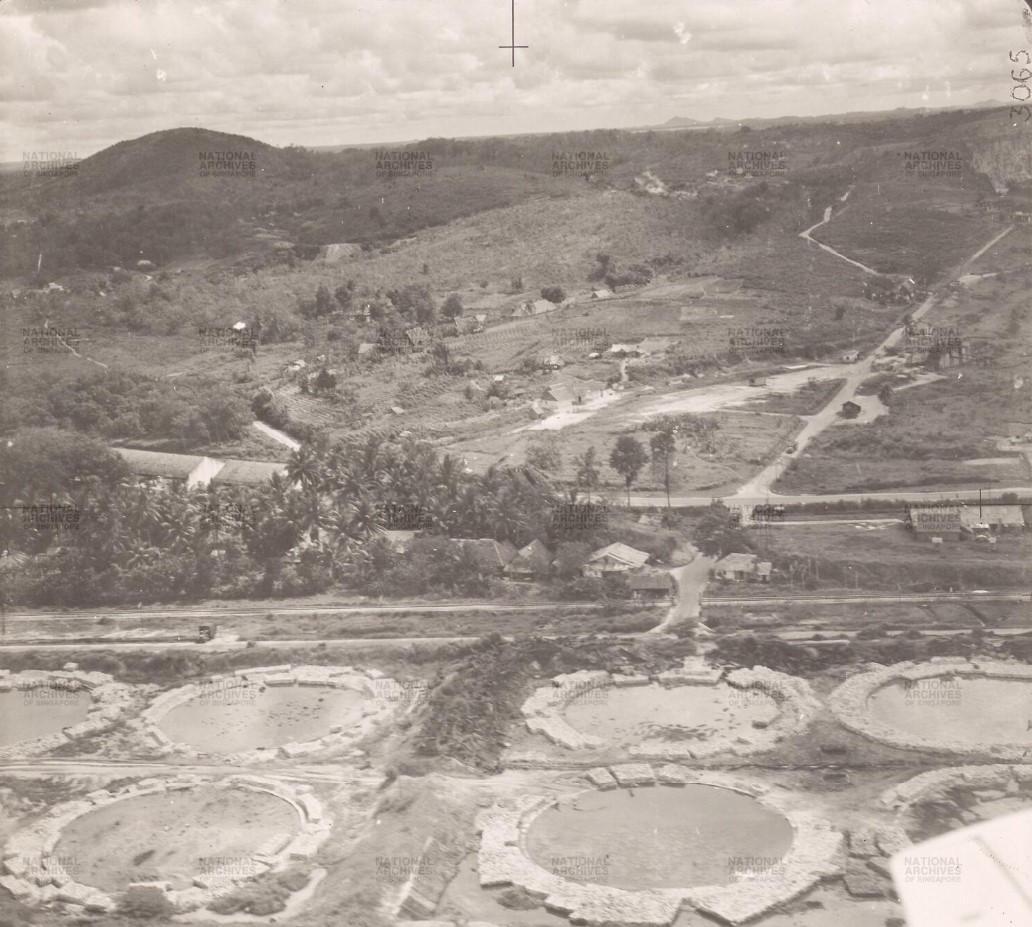 Aerial photograph showing remnants of oil tanks built by the British along Stagmont Ring during World War II, 1947. British Royal Air Force Collection, courtesy of National Archives of Singapore.
Aerial photograph showing remnants of oil tanks built by the British along Stagmont Ring during World War II, 1947. British Royal Air Force Collection, courtesy of National Archives of Singapore.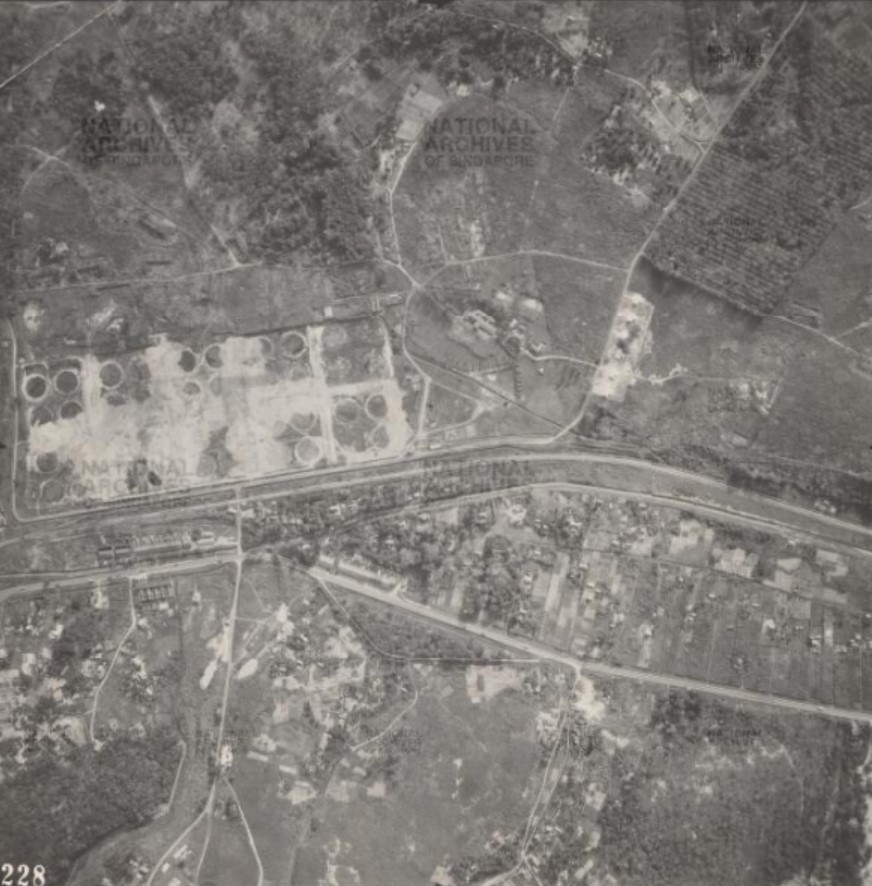 Aerial photograph oriented with north on the right, shows the Yew Tee Village area in 1951.. British Royal Air Force Collection, courtesy of National Archives of Singapore.
Aerial photograph oriented with north on the right, shows the Yew Tee Village area in 1951.. British Royal Air Force Collection, courtesy of National Archives of Singapore.However, Lim sees tremendous value in having access to such authoritative historical records, especially with the proliferation of AI-generated content today. With its extensive collection, the National Archives serves as a crucial reference point to distinguish authentic historical evidence from AI-generated content. “The archives are very important as a tool against the generative abilities of AI [which] just create whatever people want to see,” he said.
Notes
-
Ng Wei Kai, “S’pore Firm Launches New Zealand-based Adventure Game in Tie-up with Maori tribe,” Straits Times, 14 December 2024, https://www.straitstimes.com/singapore/spore-company-launches-adventure-game-in-new-zealand-in-a-tie-up-with-maori-tribes. ↩
-
British Royal Air Force, “Aerial View of Holland Village with a Chinese Cemetery in the Foreground,” 2 September 1958, photograph. (From British Royal Air Force Collection, National Archives of Singapore, accession no. 188736) ↩
-
Ho Teck Min, oral history interview by Lye Soo Choon, 16 June 2005, MP3 audio. Reel/Disc 2 of 3, 54:21, National Archives of Singapore (accession no. 002940). ↩
-
Ho Wan Hew, oral history interview by Lai Ah Eng, 4 November 1996, MP3 audio. Reel/Disc 8 of 10, 31:04, National Archives of Singapore (accession no. 001790). ↩
-
Salakau was the name of one of the oldest and more prominent secret societies or street gangs active in Singapore from the 1970s to the 1980s. Salakau means the numbers “369” in Hokkien. ↩

